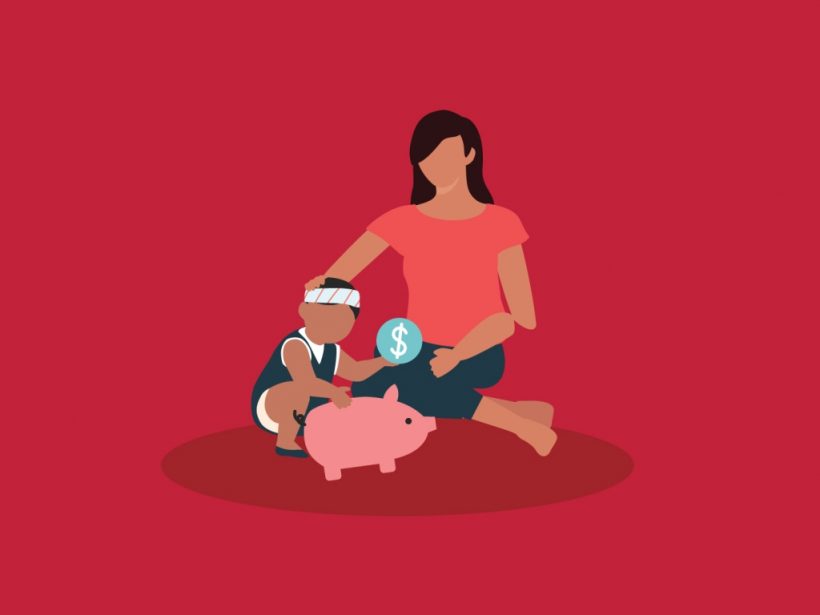cheap clomicalm online pharmacy no prescription
Like many immigrants, my parents came to this country with not much more than the clothes on their backs (my father from Cuba and my mother from Russia) and the little bit of cash they were able to save. At the time, I was only 8 and didn’t understand what was happening, but my parents assured me that this move was best for our family. And it was — they eventually opened their own real estate business and I attended a top college in New York City. But despite our family’s success, there is one area in which I often feel like a failure: My relationship with money.
As a child, I don’t remember my parents ever talking openly about money and I wasn’t aware of whether we had it or not. What I do know is that they worked hard to provide a better life for me and my brother. My dad worked in construction, my mom was employed at a food-packaging factory, and they both delivered pizza at night. Eventually, my parents got into real estate and built a business buying, renting, and flipping houses.
I didn’t know that we were successful until I was in high school. That’s when we went from renting a decent-sized house to a nice house, on a canal in Florida with access to the ocean, and a pool with a jacuzzi.
By then, it felt like we’d finally “made it” and achieved the American Dream. But I didn’t know how my parents were able to afford it because, well, we never talked about money.
“Some immigrant parents are not accustomed to talking about money with their children,” Mayra Alejandra Garcia, a.k.a., the “Debt-Free Latina,” a financial coach based in Phoenix, Arizona, tells SheKnows. ”Money is a taboo topic at times but we need to make it comfortable.” Although many American children don’t receive a good financial education, it’s especially true in immigrant families because “immigrants often come from poor regions and don’t have a background in money and making investments.”
There is one area in which I often feel like a failure: My relationship with money.
When I left home for college, I had no concept of how to deal with money. I didn’t know that I should be applying for scholarships or student loans to help pay for school, only that I needed to fill out the government’s Free Application for Federal Student Aid (FAFSA) form. It was around that time that I opened my first credit card to build credit — which was the only financial advice my parents ever gave, since they did the same after arriving in America. I made the occasional splurge, but I spent most of my time studying, thanks to a work ethic handed down from my parents.
Upon getting my first post-graduate job, I had to figure out how to manage my expenses and live with basic necessities, while living paycheck-to-paycheck. I never contributed to my 401K retirement account or kept a savings account, just like my parents, who put all their money toward their business.
“Language barriers often make it difficult for immigrants to understand the U.S. financial system,” says Garcia. “Immigrants are sometimes confused when it comes to learning about different types of loans or interest rates in America.” This was true for my parents, who didn’t get much of a financial education from my grandparents, perhaps because they originated from a communist country where opportunities to advance weren’t readily available.
Another problem for my parents: As their business grew, so did their needs — a common occurrence called the “lifestyle creep.” As they earned more, they bought fancier items like televisions and jewelry and took trips abroad. Yet they still lived paycheck-to-paycheck without an emergency fund.
When I met my husband we both carried debt, however we still needed to buy a car and a home. I slowly started getting our financial life in order, with mixed results. We traveled during the first few years of our relationship but we also refinanced his student loan to get a lower interest rate and better payment plan and paid off our credit card debt (albeit racking up another $15,000 after moving to another state).
It felt like we moved a little ahead, only to get a little behind. Currently, we owe $131,985.17 between his undergraduate student loan, my car, our credit cards, and home improvements. And that’s not including our mortgage or the $19,000 yearly cost of daycare for 18-month-old son. But we’re getting through it — one bill at a time.
Still, I worry about our money management skills and, even more so, the example we’re setting for our son. That’s why I’ve made a commitment to doing the opposite of what my parents did by talking openly about money at home.
Here’s what Garcia recommends: Teach your kids the principles of giving, saving, and spending wisely. “If they receive an allowance or earn money, they can separate their money into these three categories,” she explains.
But even more important than teaching is demonstrating your own money habits. “What I’ve learned in my own household is that more is caught than taught,” says Garcia. “My kids are 16 and 20 and they see our example of regularly making our budget, avoiding impulse buying, [taking] affordable vacations, and that debt isn’t an option in our home.”.
Although my husband and I are still figuring it out, I will be modeling this at home. It won’t be easy but approaching the subject — however imperfectly — is my only choice. While my parents have always provided for me, what I really needed was an honest financial education; instead, I’m learning from what they didn’t teach me for the benefit of my son.

Source: Read Full Article
